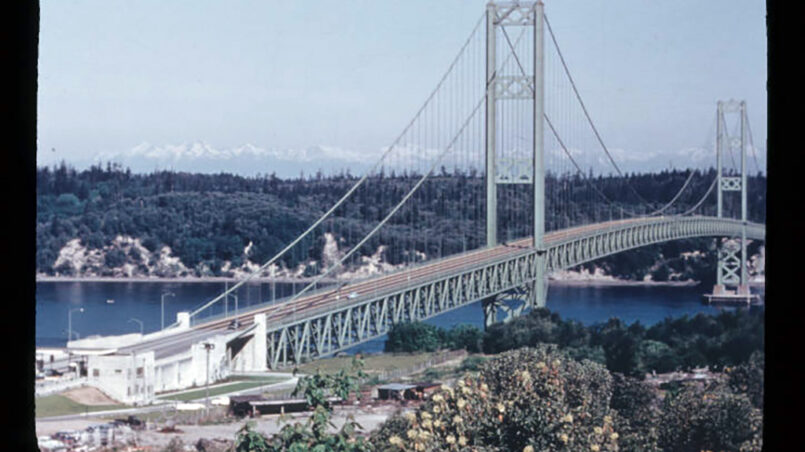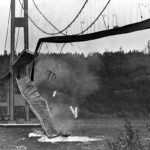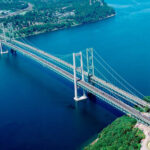A bridge collapse is a humbling experience, even when no human lives are lost. The events of November 7, 1940 showed engineers with remarkable clarity the limits of a purely mathematical approach to suspension bridge design. It would harken in a new era in suspension bridge design, an era of new methods and techniques developed to better understand wind induced behavior, some of which are still in use today.
The lasting legacy of the failure of Galloping Gertie and its eventual replacement would be a series of firsts. The replacement bridge would become to first suspension bridge to be designed and tested in a wind tunnel. It would also be the first suspension bridge to be designed and built with hydraulic motion damping devices. In this edition of TheBridgeGuy we’ll look at that legacy, the second Tacoma Narrows Bridge – 72 years later.
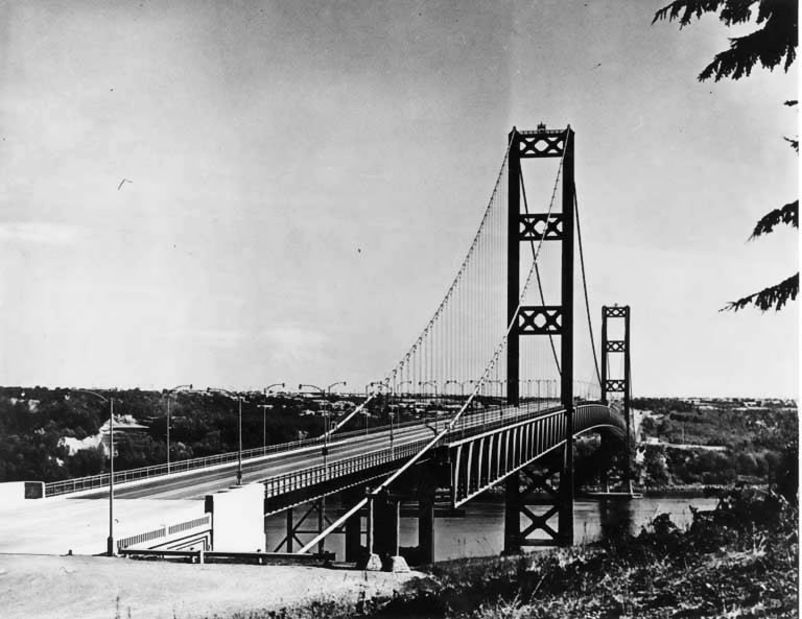
Although it was only open for a few months, the first Tacoma Narrows Bridge was, at the time of its collapse, a vital asset to the Puget Sound region. The Navy was a major champion for its construction and having a link between the Kitsap peninsula and Tacoma was considered essential. With the first bridge’s demise, the Navy saw an opportunity for an even more extensive transportation link.
Opportunity knocks – the Navy was now pushing heavily for a combined road and rail bridge across the Narrows to replace the ill-fated Gertie. This required the bridge be a cantilever truss type, a design which would have more than doubled the cost to build. That and the amount of steel required in the middle of a war quickly ruled out such an idea.
In July 1941, some 8 months after the collapse, the Toll Bridge Authority appointed Charles Andrew to lead the effort of designing the replacement bridge. By October, a design similar to Clark Eldridge’s original suspension design, complete with stiffening trusses, was chosen at a cost of $7 million. Andrew knew early on that a purely mathematical approach to designing the replacement bridge would not be sufficient. The experience gained by the demise of the first bridge meant that extensive testing would be needed.
Professor Farquharson began testing work in the University of Washington’s wind tunnel, which could house a model up to 100 feet in length. Farquharson would take drawings produced by Dexter Smith, the lead designer, and then produce models for testing. Testing would continue from 1943 through 1945.
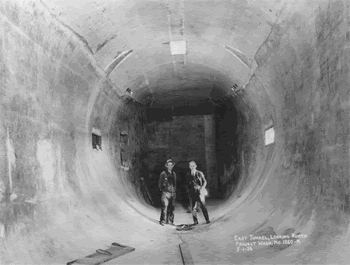
Overall, Farquharson would test some 200 different configurations, including winds that would hit the bridge at various angles of attack. Included in these configurations were open grids to allow wind to pass, lateral bracing at the bottom of the trusses and motion damping devices at various locations. The idea was to limit lateral and torsional movement as much as possible.
After some $80,000 was spent on design and testing, the design of the replacement bridge was complete by December 1945. The Toll Bridge Authority finalized the designs through April 1946 and final construction ready drawings were ready by September 1946.
The replacement bridge would look completely different compared to its doomed predecessor. The replacement bridge would be 46 feet wide, complete with 4 lanes. Each lane was a narrow 9.6 feet wide and separated by wind grating. The deck is lightweight concrete which is paved with hot mix asphalt.
Stiffening trusses would supersede the slender ribbon edge girders and are 33 feet deep. Due to corrosion found at the base of the original towers, the foundation pedestals were raised 17 feet to try and limit salt splash. The new towers stand 58 feet taller and 21 feet broader than the original bridge’s. The main cable diameter was enlarged from 17 inches to 20 inches with the end anchorages being enlarged around the existing anchor blocks, all in an effort to accommodate a bridge that would weigh about 1.6 times that of its predecessor.
Besides the actual foundations, the only portion of the original bridge to be reused was the 450 foot long approach viaduct at the west end. With some modifications to account for the wider bridge deck, this structure still has the same style girders that the original suspended span had.
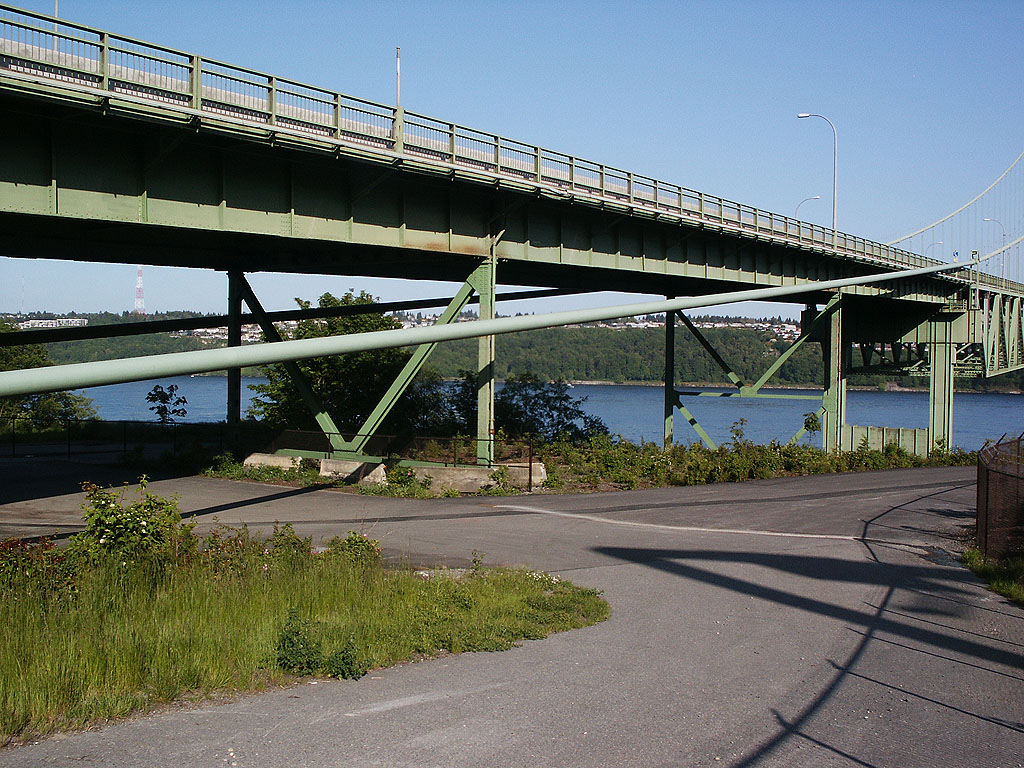
The Toll Bridge Authority initially had trouble securing insurance for the replacement bridge, which further delayed construction. On April 30, 1947 Governor Monrad Wallgren announced that insurance had been secured and construction could commence. In the meantime, construction costs had ballooned from $8.5 million to $11.2 million, further delaying construction. On October 15, bids from Bethlehem Pacific Steel to construct the superstructure and bids from John A. Roebling’s Sons to erect the suspension cable system were accepted.
Financing the construction continued to be an issue, an issue that wouldn’t see resolution until March 1948. The Toll Bridge Authority eventually offered a $14 million bond to be repaid using tolls which was supplemented by a bond for $1.5 million from Pierce County. This allowed construction to commence, with ground breaking occurring on April 9, 1948 – seven and a half years after the collapse.
Despite the delays, construction happened very rapidly. With the war over, steel was becoming more readily available. Galvanized steel wire, some 100 million feet of it, was shipped from Trenton, New Jersey in 350 pound coils to the site.
Even with all of the materials on hand, there were still some unexpected incidents during construction. One of these was an earthquake which shook the region on April 13, 1949. The tremor knocked the northeast cable saddle from the tower, sending it to the bottom of the Narrows. After three days at the bottom of the Narrows, crews were able to salvage the saddle and reinstall it. To this day the northeast saddle corrodes twice as fast as the other saddles.
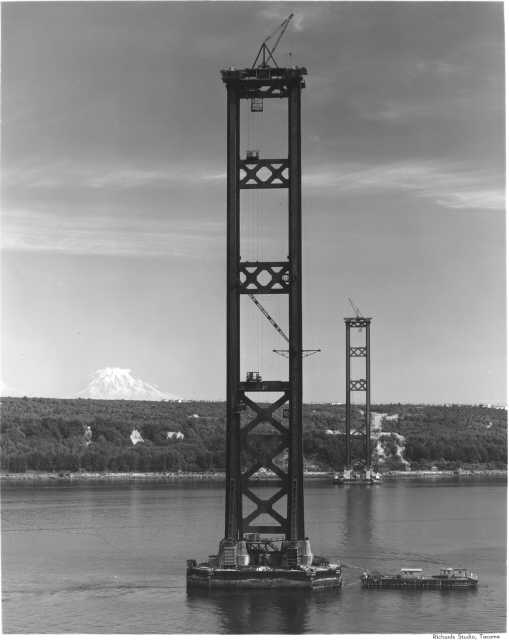
The towers were completed by July 1949 and the catwalks needed to spin the main cables were in place by September. Harold Hills, a field engineer for Roebling’s, became the first person to cross the Narrows via the new catwalks.
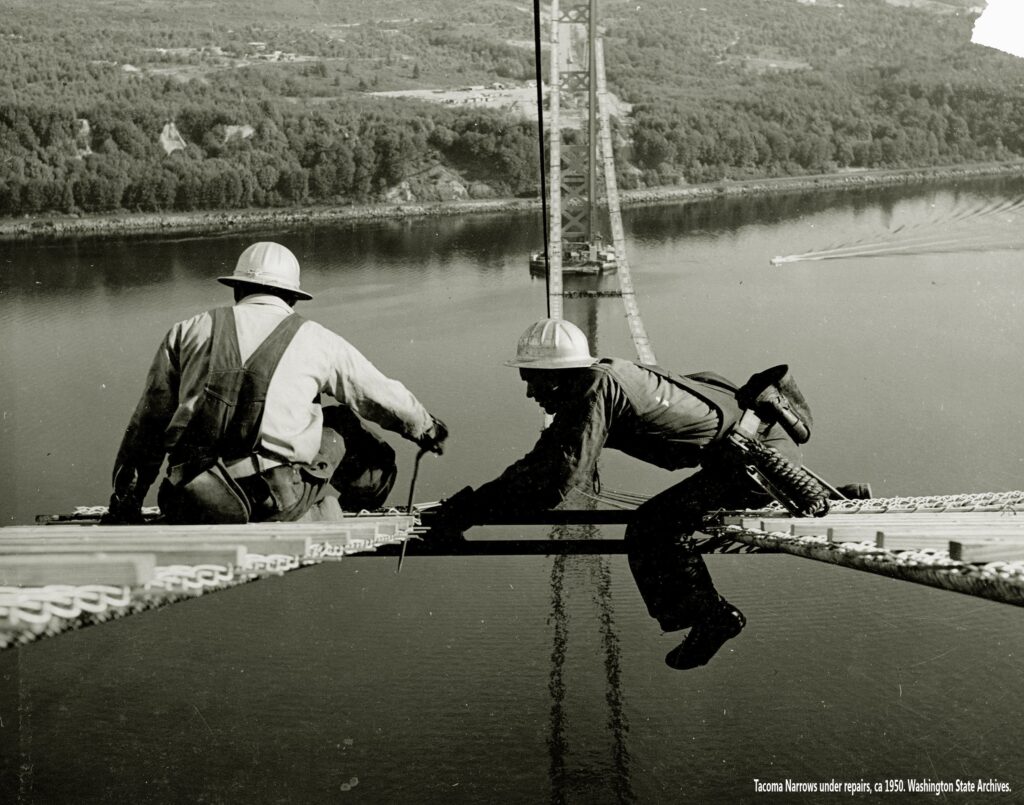
Main cable spinning began in October 1949. Each cable contains 19 cable strands, with each strand being made up of 458 six gauge wires. The winter of 1949-50 was one of the worst on record. Despite bad weather and several delays, Roebling’s worked around the clock to complete the main cables by January 1950. Suspender cable work was complete by March and superstructure construction began soon thereafter.
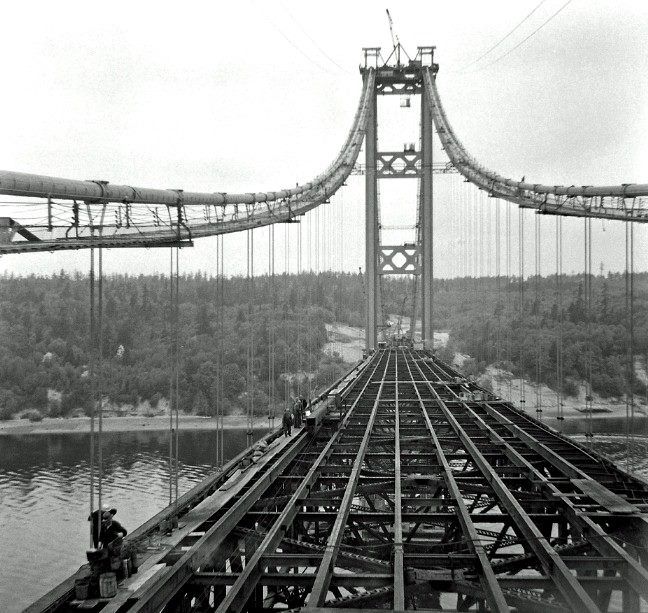
Superstructure erection was initiated at each tower, which is somewhat different than how suspension bridges are typically erected. The shore span crews worked toward shore while the main span crews worked toward each other. Crews averaged about 128 feet of steelwork per day. By June 1950, superstructure work was completed.

Between June and October, finishing work continued on the bridge. The concrete deck was placed, the toll plaza completed and final painting was completed. The bridge is painted “Narrows Green,” which is the same color used on the first bridge. One of the last items to be added were the hydraulic damping devices. These are installed on the main cables at mid-span, between the main span superstructure at each tower and between the side-span superstructure and each tower. Although hydraulic devices were retrofitted to the first bridge, the replacement bridge was the first to have them be incorporated in the original design. From start to finish, the bridge took 30 months to complete.

The bridge opened to traffic on October 14, 1950. The toll each way was 50 cents per vehicle with an additional ten cents per passenger. Five years after the bridge opened, the daily traffic count was 4,699 vehicles. By 1960, the count was 6,218 vehicles per day and by 1965 that figure had doubled. If you build it, they will come. Tolls were removed in 1965, 13 years ahead of schedule. And traffic volumes didn’t just stop there – by 2000, traffic counts were 88,000 per day.
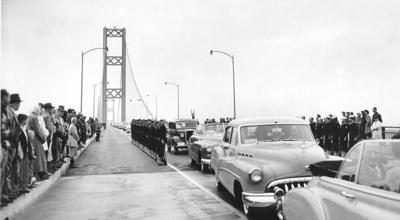
Maintenance of the bridge involves many aspects, with continuous painting being one of them. Each summer, maintenance workers paint the span. It takes 10 years to fully paint the entire span. The bridge is considered one of the best maintained suspension bridges in the nation.


In the next edition of TheBridgeGuy, we’ll explore the events that led to the construction of the third Narrows Bridge. As with any major transportation project, politics rears its ugly head. With the discontinuation of tolls in 1965, having them be reapplied in 2007 posed a major inconvenience for users of the bridge. We’ll also look at the future of the second bridge, how it is holding up and some proposed modifications that were never carried out.
Views: 1102